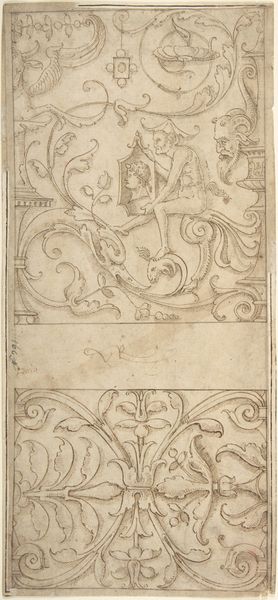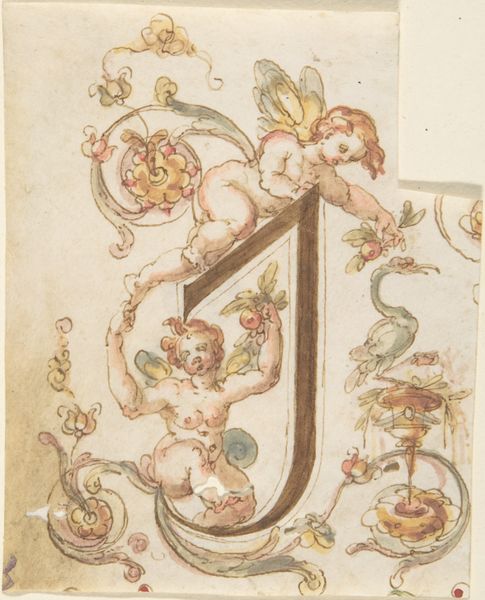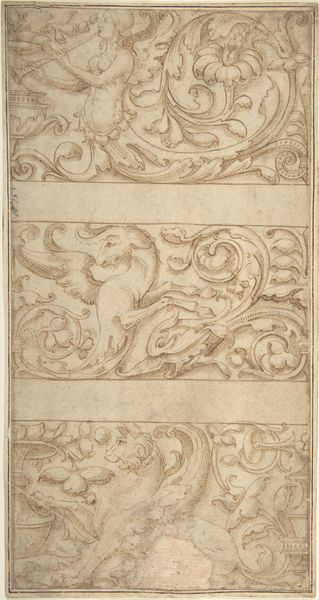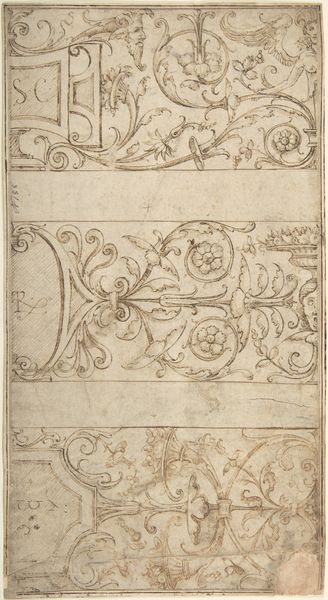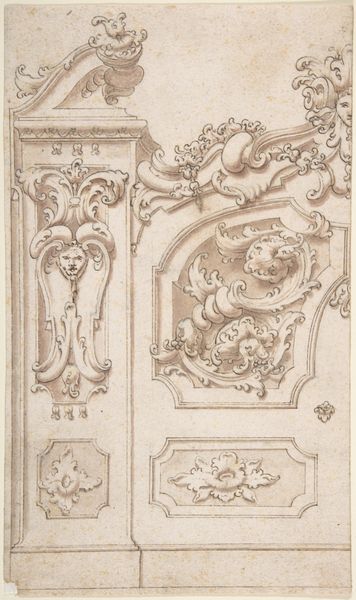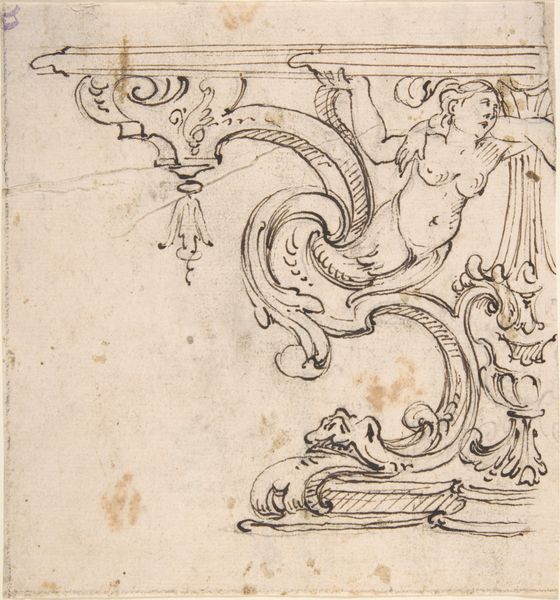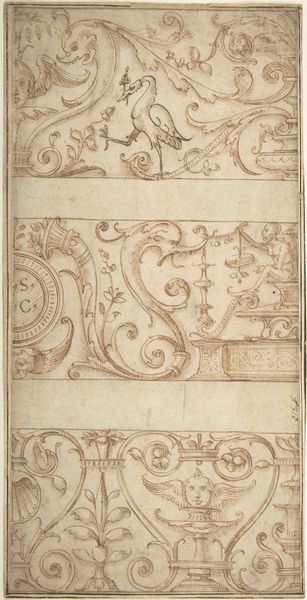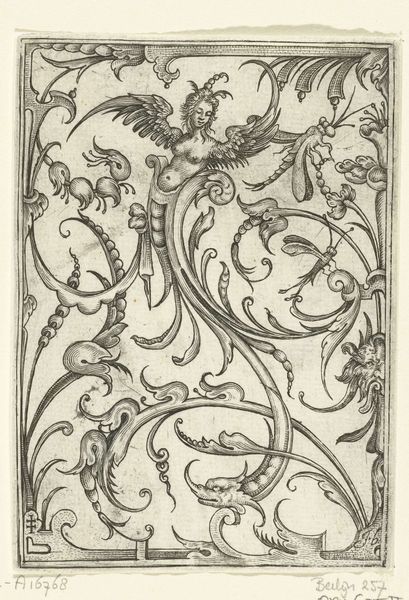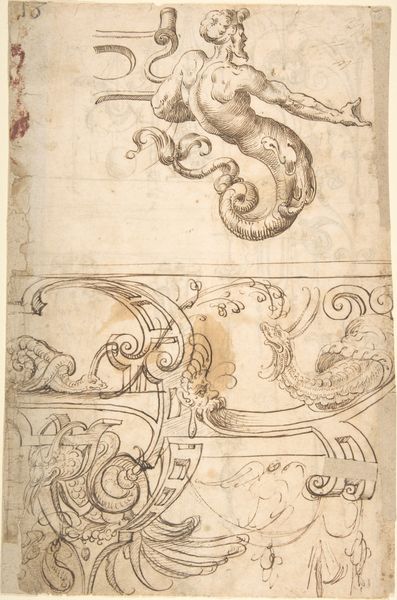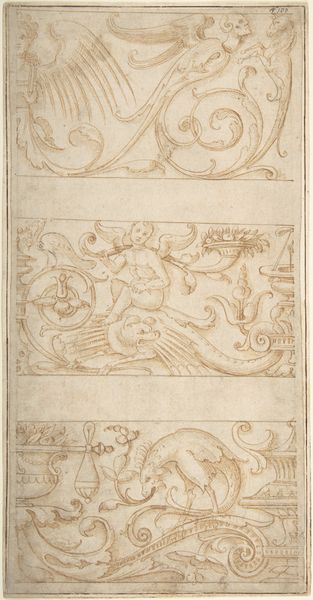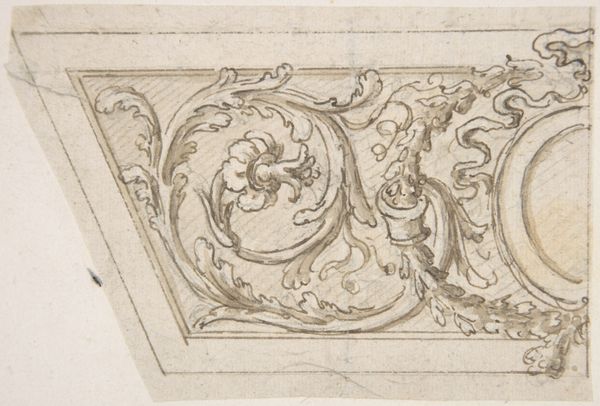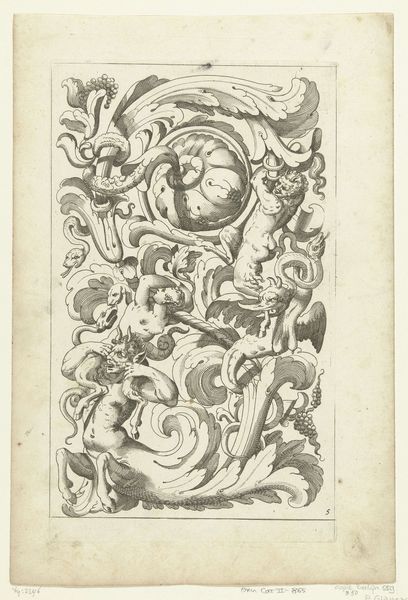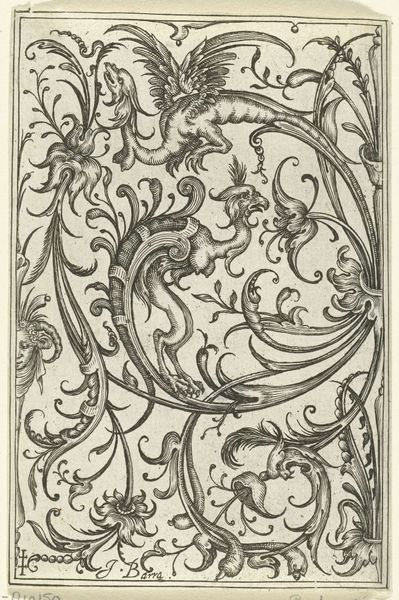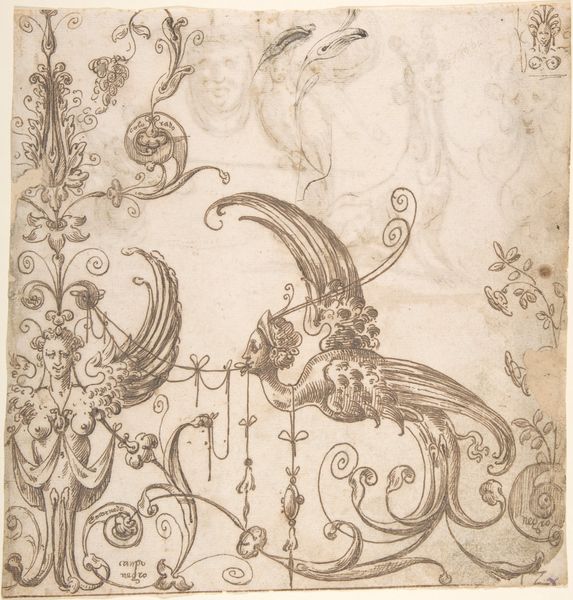
Fragment of Ornamental Drawing after the Antique; Half-harpy with Acanthus Rinceaux 1500 - 1575
0:00
0:00
drawing, print, paper, ink
#
drawing
# print
#
paper
#
form
#
11_renaissance
#
ink
#
geometric
#
italian-renaissance
Dimensions: 6 x 3 11/16 in. (15.3 x 9.3 cm)
Copyright: Public Domain
Editor: This is an ink drawing called "Fragment of Ornamental Drawing after the Antique; Half-harpy with Acanthus Rinceaux," created sometime between 1500 and 1575 by Andrés de Melgar. The swirling lines and shapes feel really dynamic. What do you see in this piece in terms of its formal elements? Curator: Note the deliberate use of line, the modulation of thickness and pressure that give the forms weight and volume, despite the overall flatness characteristic of drawing. The composition appears at first glance chaotic, yet a closer inspection reveals a structured interplay between the representational, a 'half-harpy' as the title indicates, and the abstract, namely the acanthus rinceaux. Observe the relationship between the positive space defined by the ink and the negative space created by the paper. Where does your eye rest? Editor: I’m drawn to the spiral at the bottom and then my eye moves upward along those curved lines. I guess you can't really escape the linear flow in this drawing! It almost feels like the lines are pulling me upwards. Curator: Precisely. That upward momentum is achieved through careful manipulation of form. Now, consider the inherent properties of the medium itself: ink on paper. The relative permanence of the ink juxtaposed against the fragility of the paper introduces an element of tension. Do you find that the restricted palette encourages you to focus on other elements beyond colour? Editor: Definitely. Because it's just ink, you really focus on the lines and how the artist used them to create shape and form, which maybe you wouldn't notice as much if it was brightly colored. Thanks, I never considered the media itself could influence how you view a piece. Curator: Exactly. Form, material, structure, all coalesce to give rise to meaning, regardless of representational intent. It has been insightful exploring this work with you.
Comments
No comments
Be the first to comment and join the conversation on the ultimate creative platform.
